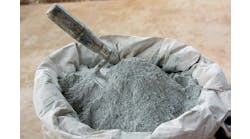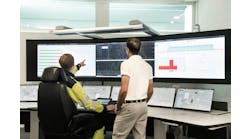"Everything starts out by asking customers what they're trying to measure and why." Yokogawa’s Scott Eddleman helps users cope with new flare-monitoring rules.
Just like fire itself, flare-monitoring rules and technologies are dynamic and don't stand still. This makes it crucial to keep up with the latest requirements and most appropriate solutions, or consult a trusted, expert partner who can keep you up to date—and help prevent unburned hydrocarbon emissions.
"In the last 10 years, the U.S. Environmental Protection Agency (EPA) has been paying closer attention to flare emissions due to some incidents in which product went to flare but didn't burn completely, and in some cases to unlit flares," said Scott Eddleman, advanced analytical sales manager, North America, Yokogawa Corp. of America.
"In 2016, the EPA finalized its refinery sector rule on maximum achievable control technology (MACT) regulations, and gave refineries 18 months to comply with the requirements for flare monitoring. This rule, 40 CFR 63, Subparts CC and UUU, affects any refinery with a flare used as a control device for an emission point. Those refineries must be in compliance by Jan. 30, 2019. In addition, the MACT rule will be rolling out to other industries in the future."
Eddleman presented "Regulatory Flare Monitoring and Process Analyzer Solutions" at this week's Yokogawa User Conference in Orlando.
"This regulation seeks to make sure that flares are 98% efficient at all times, so unburned product isn't released to atmosphere," added Eddleman.
Plan to manage and monitor
The new flare rule sets flare operating limits, requires a flare management plan (FMP), and requires a continuous parameter monitoring system (CPMS). It also covers pilot flame monitoring, visible emissions and flare tip velocity, which were also in earlier versions of 40 CFR 63.
An FMP must monitor BTUs, net heating value in the combustion zone (NHVcz), net heating value dilution parameter (NHVdil) and vent gas compression. A CMPS must include: identification of the specific flare monitored, flare type, monitored parameters, expected parameter range including worst case and normal operation, monitoring equipment descriptions, data collection systems, and quality control and assurance procedures.
"The rule states, 'For each flare, the owner/operator shall operate the flare to maintain NHVcz gas at or above 270 BTU per standard cubic feet (scf) determined on a 15-minute block period basis when regulated material is routed to the flare for at least 15 minutes,' " explained Eddleman. "It's especially important to note that, so far, there's no concession for missing data points. We've asked the EPA about this, but they haven't responded yet."
Which analyzer to use?
To obtain the data needed to comply with 40 CFR 63, Subparts CC and UUU, process analyzers are essential, but it's just as important to evaluate available technology, and implement the one that's best for each flare's individual characteristics. The most well-known and widely applied analyzer methods for flare monitoring are:
Process BTU analyzers, used to measure fuel gas quality, are calorimeters that burn samples to measure oxygen content in flare gas, and calculate BTU values. Eddleman reported they provide instant and continuous measurement, which meets the 15-minute response time requirement, but they only measure BTUs, so they can only show if a flare is at, above or below limits. They don't measure specific components or composition, so more detection may be needed, especially because users will also have to measure hydrogen. BTU analyzer installation requires a sample conditioning system, instrument air header, atmospheric vent header with a flame arrestor, power supply and cabling. All parts must be designed for Class 1, Division 1, Group B/C/D, T3 inside and Division 2 outside operation. Typical cost is $215,000.
Process mass spectrometers are popular because they can provide multiple measurements quickly, but they're also costly and complex, and many refineries aren't familiar with them, so personnel may need added training. Eddleman reported they can analyze 30 components in about 12 seconds, easily meeting the 15-minute rule, and they can be configured to handle multiple streams. One mass spectrometer can also measure multiple flares, depending on distance from the flares to the analyzer, while a stream switching system can direct samples to the analyzer on a rotating basis, he added. A mass spectrometer requires a sampling system with an insulated and heated enclosure, and an environmentally controlled steel enclosure for the analyzer. All devices must be designed for Class 1, Division 1, Group B/C/D. Typical cost is $245,000 per flare.
Process gas chromatographs (GCs) are already used by many refineries to analyze different process streams, so they're common and familiar to most users. They typically measure component-level concentrations, and provide compositional analysis of finished products and mid-stream processes. GCs function by flowing a sample through a packed coil of tubing called a column, where its individual components are separated. Each component exits at a different time, where they're detected, identified and measured. This data can be calculated to provide BTUs. While GCs provide a lot of data, their analysis takes 4-12 minutes per cycle depending on number of components and sample composition. GCs require a sample system with pneumatically activated stream selection valves, and heated and insulated enclosures for the GC and sampling system. All devices must be designed for Class 1, Division 1, Group B/C/D, T3 inside and Division 2 for outside operation. Typical cost is $164,000.
"Users can sometimes combine a BTU analyzer and a GC in the same application instead of using a mass spectrometer, but again, a thorough evaluation of the application is needed to determine if this would be the best solution," said Eddleman.
Flare rules spread elsewhere
In the future, Eddleman reported that upcoming ethylene MACT requirements are expected to reflect the MACT rules in 40 CFR 63, Subpart CC. They're expected to be released before Thanksgiving 2018, and assume a three-year compliance window with compliance required no sooner than 2021. "New industries are going to face the same rules and as flare monitoring systems, but we can also work with them to find the best, customized fit," he added.
This assistance comes from Yokogawa's Advanced Analytical Team, which supplies sample systems, shelters, safety systems, power distribution and data management. Its capabilities include front-end engineering and design (FEED), detailed engineering and design, site services, integrated engineering and factory acceptance tests (FAT), and building to specifications. Many of these activities are carried out at its more than 40,000-square-foot integration facility in Coldspring, Texas.
"These analyzers and sample systems are all custom engineered, which means everything starts out by asking customers what they're trying to measure and why" said Eddelman. "This is what enables us to build and integrate all-custom solutions that meet individual needs."





